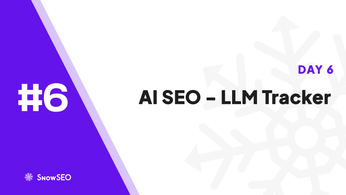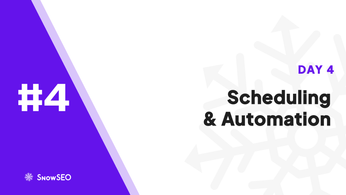
Secrets to Effective Brand Monitoring Now
Table of Contents
Uncover the hidden metrics that define brand success in 2025. Many businesses struggle to effectively monitor their brand, missing key insights. This guide reveals the tools and strategies to master brand monitoring. Written by industry experts with proven experience in brand analytics.
Understanding Brand Monitoring
Defining Brand Monitoring
Brand monitoring involves the continuous surveillance of various channels to assess how a brand is perceived by its audience. This process encompasses tracking mentions across social media, news outlets, blogs, forums, and other platforms to gather insights into public sentiment, brand reputation, and market trends. By systematically analyzing this data, businesses can identify potential issues, gauge the effectiveness of marketing campaigns, and make informed strategic decisions.
Core Metrics for Brand Monitoring
Effective brand monitoring relies on several key metrics:
- Brand Mentions: The frequency and context in which a brand is mentioned across different platforms.
- Sentiment Analysis: Evaluating the tone of mentions to determine whether they are positive, negative, or neutral.
- Share of Voice: Comparing the volume of a brand’s mentions to those of competitors to assess market presence.
- Engagement Metrics: Analyzing likes, shares, comments, and other interactions to measure audience engagement.
- Reach and Impressions: Estimating the number of people who have seen content related to the brand.
Monitoring these metrics enables businesses to understand their brand’s position in the market, identify areas for improvement, and capitalize on opportunities to enhance brand perception.

Choosing the Right Brand Monitoring Tools
In today’s digital landscape, selecting the appropriate brand monitoring tools is crucial for businesses aiming to maintain a positive reputation and stay ahead of market trends. With numerous options available, understanding the features and effectiveness of leading tools can guide organizations in making informed decisions.
Top Brand Monitoring Tools in 2025
Several brand monitoring tools have emerged as industry leaders, each offering unique functionalities:
- Sprout Social: This comprehensive analytics platform consolidates messages from various social networks, including Facebook, Twitter, and Instagram, into a unified interface. It employs machine learning algorithms to suggest responses to frequently asked questions, enhancing customer engagement. Additionally, Sprout Social provides detailed visual reports, facilitating the evaluation of social media performance. (pmc.ncbi.nlm.nih.gov)
- HubSpot: Renowned for its marketing capabilities, HubSpot offers tools to track website activity, manage tasks, and analyze key performance indicators. Its features include content discovery, research, and monitoring, enabling businesses to assess competitor activities and adjust their content strategies accordingly. (pmc.ncbi.nlm.nih.gov)
- Hootsuite: Popular among social media managers, Hootsuite supports multiple accounts across platforms like Twitter, Facebook, LinkedIn, and more. It offers post scheduling, real-time monitoring, analytics, and team collaboration features, making it a versatile choice for managing social media presence. (pmc.ncbi.nlm.nih.gov)
- Brandmention: This platform specializes in searching and analyzing over 100 social networks, including blogs and forums. It provides sentiment analysis, related keywords, and popular sources, allowing businesses to monitor brand mentions and industry trends effectively. (pmc.ncbi.nlm.nih.gov)
Evaluating Tool Effectiveness
When assessing brand monitoring tools, consider the following factors:
- Comprehensive Coverage: Ensure the tool monitors a wide range of platforms, including social media, blogs, forums, and news outlets, to capture all relevant brand mentions.
- Real-Time Alerts: Timely notifications about brand mentions enable swift responses to potential issues, helping maintain a positive brand image.
- Sentiment Analysis: Advanced tools offer sentiment analysis to gauge public perception, allowing businesses to address negative sentiments proactively.
- User-Friendly Interface: An intuitive dashboard simplifies data interpretation and facilitates efficient decision-making.
- Integration Capabilities: Seamless integration with existing marketing and customer relationship management systems enhances workflow efficiency.
- Scalability: Choose a tool that can grow with your business, accommodating increasing data volumes and expanding monitoring needs.
- Cost-Effectiveness: Evaluate the pricing structure to ensure it aligns with your budget while offering the necessary features.
By carefully considering these factors and comparing the features of leading tools, businesses can select a brand monitoring solution that aligns with their objectives and enhances their ability to manage and improve their brand reputation effectively.
Implementing Brand Monitoring Strategies
Establishing a robust brand monitoring system is essential for safeguarding your brand’s reputation and ensuring alignment with consumer expectations. Here’s a structured approach to setting up and utilizing such a system effectively.
Step-by-Step Monitoring Setup
- Define Objectives and Key Performance Indicators (KPIs):
- Clearly outline what aspects of your brand you intend to monitor, such as customer sentiment, product mentions, or competitor comparisons.
- Establish measurable KPIs to evaluate performance, like sentiment scores or share of voice.
- Select Appropriate Monitoring Tools:
- Choose tools that align with your objectives. For instance, platforms like Brandwatch and Sprout Social offer comprehensive monitoring capabilities.
- Identify Relevant Data Sources:
- Monitor various channels including social media, news outlets, forums, and review sites to capture a holistic view of brand perception.
- Set Up Alerts and Dashboards:
- Configure real-time alerts for specific keywords or phrases related to your brand.
- Develop dashboards to visualize data trends and insights effectively.
- Establish a Response Protocol:
- Create guidelines for addressing different types of feedback, ensuring timely and appropriate responses.
- Train Your Team:
- Ensure that team members are proficient in using monitoring tools and understand the response protocols.
- Regularly Review and Adjust:
- Periodically assess the effectiveness of your monitoring strategy and make necessary adjustments to stay aligned with evolving brand goals.
Analyzing and Acting on Data
- Data Collection and Organization:
- Aggregate data from all monitored channels into a centralized system for streamlined analysis.
- Sentiment Analysis:
- Utilize analytical tools to gauge the sentiment behind brand mentions, distinguishing between positive, negative, and neutral feedback.
- Trend Identification:
- Analyze data over time to detect emerging trends or recurring issues that may require attention.
- Competitor Benchmarking:
- Compare your brand’s performance metrics against competitors to identify areas for improvement or differentiation.
- Actionable Insights:
- Translate data findings into strategic actions, such as addressing customer complaints, capitalizing on positive feedback, or refining marketing strategies.
- Reporting and Communication:
- Develop comprehensive reports summarizing insights and recommended actions, and share them with relevant stakeholders to inform decision-making.
Implementing a structured brand monitoring strategy enables businesses to proactively manage their reputation, respond to consumer feedback effectively, and maintain a competitive edge in the market.

Future Trends in Brand Monitoring
As the digital landscape evolves, brand monitoring is set to undergo significant transformations, driven by technological advancements and emerging trends.
Technological Advancements
Artificial Intelligence (AI) and machine learning are revolutionizing brand monitoring by enabling real-time analysis of vast datasets. These technologies facilitate the identification of patterns and sentiments across multiple platforms, enhancing the accuracy of brand perception assessments. The World Health Organization (WHO) emphasizes the importance of staying abreast of such developments to proactively address global health challenges. (who.int)
Additionally, the integration of the Internet of Things (IoT) allows brands to collect and analyze data from various connected devices, offering deeper insights into consumer behavior and engagement. This approach aligns with WHO’s strategy to harness digital technologies for improved health outcomes. (who.int)
Trends Shaping Brand Monitoring
The shift towards digital health and innovation is influencing brand monitoring strategies. Organizations are increasingly adopting digital tools to enhance their monitoring capabilities, ensuring they remain responsive to consumer needs and market dynamics. WHO’s Global Strategy on Digital Health underscores the potential of digital solutions to improve health and well-being, highlighting the broader applicability of these technologies. (who.int)
Furthermore, the emphasis on responsible use of emerging technologies necessitates that brands adopt ethical monitoring practices. WHO’s initiatives in monitoring emerging technologies and building futures-thinking serve as a model for organizations aiming to navigate the complexities of technological advancements responsibly. (who.int)
In summary, the future of brand monitoring will be characterized by the integration of advanced technologies and a commitment to ethical practices, enabling brands to adapt to the rapidly changing digital environment effectively.
Ready to elevate your brand monitoring? Discover how SnowSEO’s unified platform automates tracking, optimizes content, and delivers actionable insights. Explore advanced brand tracking tools today at https://snowseo.com.
Frequently Asked Questions
Q1: What is brand monitoring and why is it important?
Brand monitoring involves tracking online mentions, reviews, and discussions about your brand across digital channels. It’s crucial because it helps you understand public perception, quickly address negative feedback, and identify opportunities to improve your reputation. Effective monitoring can also reveal trends, competitor activity, and customer sentiment, empowering you to make data-driven decisions that strengthen your brand’s presence and trustworthiness.
Q2: Which tools are best for brand monitoring?
Popular tools include Brandwatch for in-depth analytics and Sprout Social for real-time engagement. These platforms help you track mentions, analyze sentiment, and generate actionable insights to protect and grow your brand.
Conclusion
Mastering brand monitoring means choosing strategic tools and acting on data-driven insights. The right platforms enable real-time tracking and proactive management, as highlighted by research on digital brand management. Embracing innovation ensures your brand remains visible and resilient in a rapidly evolving landscape.





